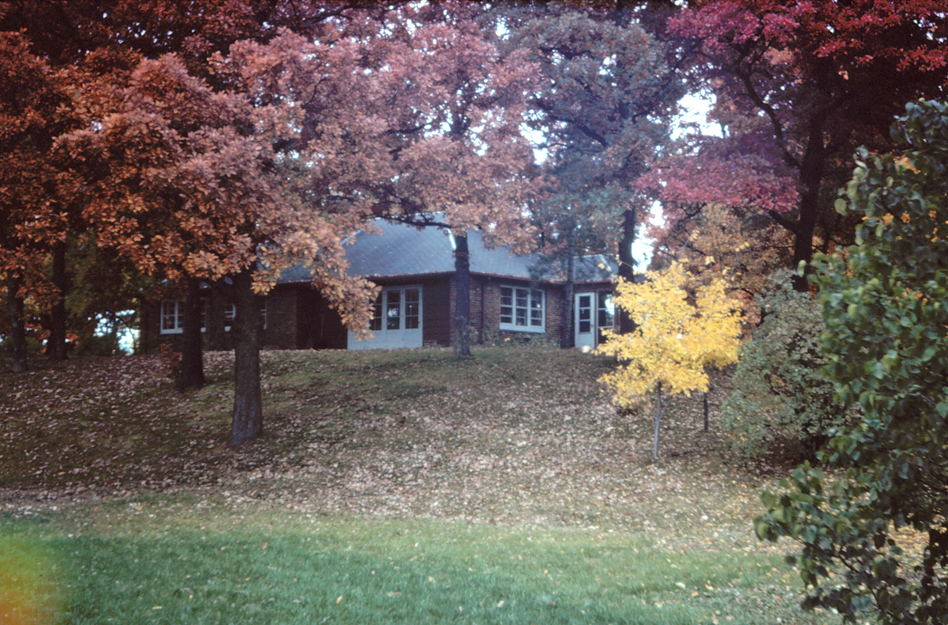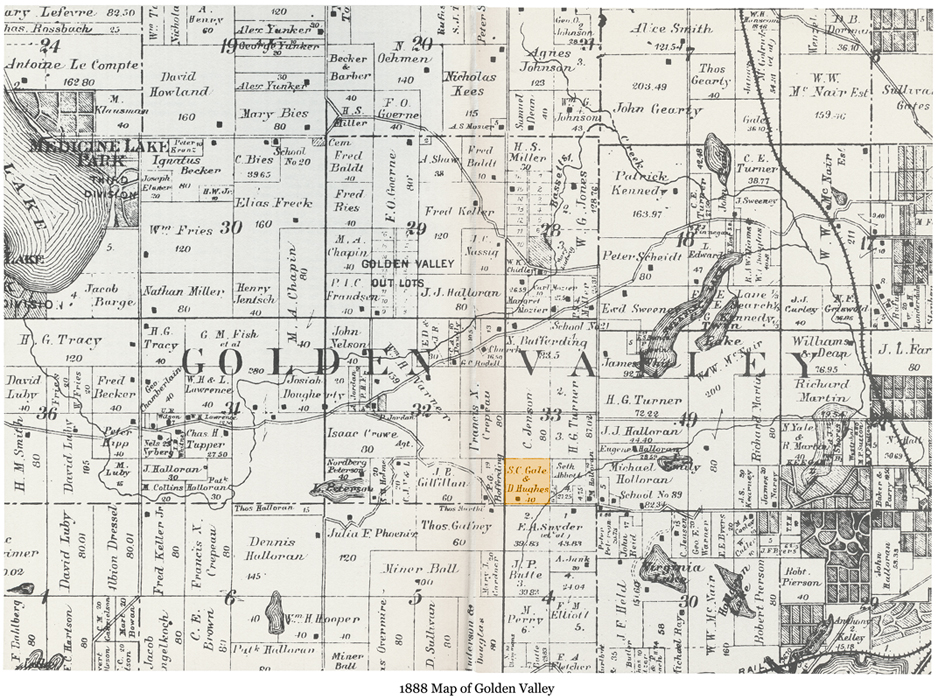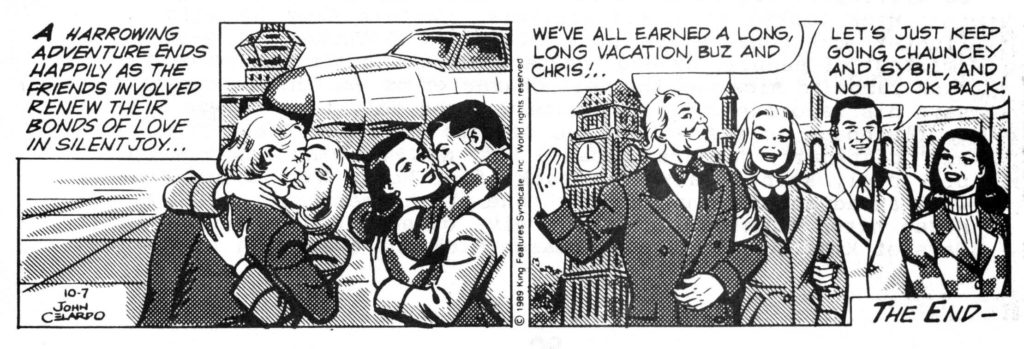Alexander Patton was Richard Keefe’s Great-great-grandfather on his Mother’s side of the family.
This page is from the book Columbus Mayors, printed during the Bicentennial by the Columbus Citizen-Journal.
Jim Keefe is the current artist of the Sally Forth comic strip. From 1996-2003 he was the writer and artist of the Flash Gordon comic strip. A graduate of the Joe Kubert School, Keefe likewise teaches Comic Art. Teaching and speaking engagements include SVA in Manhattan, Hofstra’s UCCE Youth Programs, and most recently the Minneapolis College of Art and Design.
Alexander Patton was Richard Keefe’s Great-great-grandfather on his Mother’s side of the family.
This page is from the book Columbus Mayors, printed during the Bicentennial by the Columbus Citizen-Journal.
Victoria Wegner is Dolores Keefe’s Grandmother on her Father’s side of the family.

Chris Keefe’s translation – 12/14/09
The first line seems to be in Polish.
The second line on…
nata die vigesima Decembris
anno millesimo octingentesimo sexa-
gesimo octavo in Wenecya (sp?)
paroccia Wenecya Archidiocesis
(…) Victoria filia legi-
timatori Martini Wegner et
Dorotheae (….) mari-
torum religionis catholicae bapti-
zata est in ecclesia (Venetensi) die
vigesima secunda Decembris anno
millesimo octingentesimo sexagesimo
octavo 1868
in fidem etc. etc.
Translation of the preceding follows.
Born on the 20th of December in the year 1868
in the parish of (Wenecya);
Wenecya of the Archdiocese of (?).
Victoria, daughter of legitimately married
Martin Wegner and Dorothea…
was baptized in the church of (Venetensi)
on the twenty second day of December of 1868.
In faith, etc. etc.
I think the rest is in Polish.
I’m not sure about the stuff in parenthesis – or the spelling!
Hope this helps!
– Chris Keefe
Family Trees
Family Tree via Reunion®
Clicking on icon by a person’s name will bring up their personalized family tree.
Family Tree via Ancestry.com®
You will be asked to create an account. The account is free.
Richard Keefe Family
Richard Keefe 1925-1992
Military history, obituary and pictures.
Lt. Richard Keefe – Company I
Information on I-304-76. Part of Patton’s 3rd Army during WWII.
Dick Keefe – Hoofer
Awarded 1st Prize for dancing by Horace Heidt and and his Musical Knights.
Tralee – 217 Paisley Lane
History of the Marie B. Keefe house in Golden Valley.
Alexander Patton 1791-1858 – Bio
Richard Keefe’s great-great-grandfather on his mother’s side of the family. Bio is from the book Columbus Mayors.
Keefe’s Men’s Wear
Keefe’s Men’s Wear on the Miracle Mile in St. Louis Park, MN.
Dolores Kasmar Family
Dolores Keefe – My Choice
Interview by granddaughter Sophia Keefe from 2009.
Victoria Wegner 1868-1956 – Polish Birth Certificate
Dolores Keefe’s grandmother on her father’s side of the family.
Family Video
Keefe Picnic 1990
Keefe Picnic at 26 Meander Road the summer of 1990.
Family Audio
November 1973
Dick Keefe family audio cassette, sent to his sister Pat.
Google Photo Albums
Keefe Family Slides Dick & Dolores Keefe family slides
John E. A. Keefe – February 15, 1880 – June 12, 1928
Marie B. Keefe – October 22, 1887 – February 22, 1973
Nicholas E. Keefe – October 13, 1967 – May 5, 2022
Kathy Keefe/Sister Brigid – January 24, 1942 – July 30, 2024

The map shown below is of Golden Valley circa 1888. Highlighted is the forty acres that Grandma Keefe and great-aunt Lucille would inherit from the Hughes sisters in the 1930s.
Click on images to see larger.

And here’s a map from 2012 overlaid on the 1888 map so you can get an idea how Golden Valley has changed since.

Excerpt from correspondance between Aunt Pat to Tom Keefe.
February 9, 2001
In a nutshell, my mother and Lucille were raised in a house on Royalston Avenue in north Minneapolis, near the Hughes family. There were four older children in the family, I think probably in late teens and twenties at least. The men, Daniel and Joe Hughes were firemen on the old horsedrawn fire engines. Their sisters were Mary, the oldest and Annie the younger. They were very fond of Mom and Lucille who visited them in the neighborhood and Mom stayed in touch with them after she moved away with her parents to 2536 Bryant Avenue S. when she and Lucille were in their teens and twenties.
When I was young and we all were living at 4112 Harriet Avenue S. I went with my mother and Grandma Byrne to visit the Hugheses especially at Christmas and sometimes at other times. Dan and Joe were dead, I never knew them. Mary died in 1934, in her eighties. I think Anne died in 1936 or 1937. None of the Hugheses married so there were no heirs and they in their will left everything to Mom and Lucille. This was a great surprise. They were on Relief, which was like Welfare, so my grandfather Byrne asked his lawyer and he suggested the heirs pay back to Relief what had been paid to the Hugheses during their life. They owned the house they lived in, which looked old on the outside but it was okay inside. I remember once I asked to go to the bathroom just so I could see the upstairs, I then saw the living room which was never used, had a full length picture of the Agony in the Garden on one wall, nice carpet on the floor, Dan’s and Joe’s uniforms hanging from a hall tree. There was a good bathroom upstairs and some bedrooms I did not look at. We used to sit in a tiny room with an old wood stove with the isinglass little amber windows in it with their big police dog. The kitchen had a hand pump and a sink and went out to the back where there used to be a stable for horses. It was like no other house I ever visited and fascinated me.
Next door there was a bar that was run and rented by some guy. Your father used to have to collect the rent from him sometimes. The Hugheses owned that and the forty acres in Golden Valley. They also owned some little tract of land near Lake Minnetonka and what was called Paisley Road. No one was ever able to locate it. Dick tried several times.
The forty acres had a house on it, a barn, a shed, a pump, an outhouse, and it was run by the Schultes, dirt poor farmers with ten children. The oldest girl, Henrietta, was my age, went to a German Catholic school, St. Joseph’s I think, as did the rest of the children. When in 1938 we decided to build on the land, the Schultes moved to a farm right behind us on 6th Ave. or Olson Highway. Dick bought a horse and kept it in their barn. He used to play with Kenny Schulte who was his age and with Lenny Brummer, who lived across Glenwood Avenue right back from where Bill and Lucille’s house was, the original farmhouse.
Excerpt from correspondance between Aunt Pat to Tom Keefe.
February 10, 2001
Just wanted to add a P.S. to what I wrote yesterday. I think I said that Annie and Mary Hughes were in their late teens and twenties when Mom and Lucille were children. I think they were more like in their thirties and forties. John, my brother, said that when he and Byrne were young and were living on 25th and Aldrich, Annie Hughes used to come in a horse-drawn sleigh and pick them up and take them for rides around the lake. My mother used to pick up Annie after Mary (Hughes) died, bring her to our house on 41st and Harriet for a day’s visit, and made her a dress while she was there. I remember that very well. Annie was a peppy, jolly person. She used to dye her hair, and I remember that I thought it was the same color as Dyanshine shoe polish we used to use.
That’s all for now.
Pat
Update from Maureen Gainey
July 10, 2012
One thing I can add to is what the Hughes brothers did for a living. J. Byrne Keefe senior – my dad – always told me that they were not fire FIGHTERS, they worked for a company that would go into buildings on fire and cover the merchandise, materials or machines to cut down on a loss – almost like a fire insurance company type job. So they didn’t fight the fires, but worked to prevent or lessen the loss.
Just a tidbit from Dad’s remembrance.
– Maureen Gainey
Pictures






Aerial view of Tralee from 1967

In 2018 Danny was able to give Tom, Deb and I a walkthrough of Grandma’s house before it was sold.
Then and Now – Danny Keefe


Then and Now – Gone but not forgotten…




With the Amazing Spider-man comic strip going to reprints for the time being, Roy Thomas and Alex Saviuk’s run on the strip has come to an end. March 17, 2019 was the last Sunday with March 23, 2019 being the last daily.


The Spider-Man strip started out January 3, 1977 written by Stan Lee and drawn by John Romita. Following Stan Lee’s run on the strip Roy Thomas had written the strip uncredited for a number of years (more on that at SyFy.com). Artists that followed Romita included Fred Kida, Larry Lieber, and most recently Alex Saviuk with Joe Sinnott inks.
After the announcement of the strip’s finale, Joe Sinnott’s son Mark posted the following to his Dad’s Facebook page.

Truly the end of an era!

With adventure strips being far and few between on today’s comics page, I thought it would be of interest to look at a few notable comic strip finales.
Note: Thanks to Allen Lane who posted a number of these to the Yahoo Classic Adventure Comic Strip Group.
Buz Sawyer was created by Roy Crane and first appeared November 1, 1943. Crane worked on the strip until his death in 1977.
For more in-depth info on Buz Sawyer I defer to Ray Contreras for the following info.
“Henry (Hank) Schlensker joined Crane right after the war (Schlensker had been a flyer in the war) and started working on the BUZ Sundays as soon as he joined Crane in 1946. In 1950, looking to ease his workload on the daily strip, Crane moved Schlensker from the Sundays to the daily strip. Around 1969, due to chronic ulcers, Roy Crane stepped back from the strip completely. Ed Granberry, who had been assisting on the writing, took it over completely; and Schlensker worked on the art for the daily, as he had basically for many, many years; only now without Crane’s involvement. Clark Haas and later Al Wenzel drew the Sunday after Crane switched Schlensker to the daily. Crane would look at the finished product, but after working years on the strip (both daily and Sunday), Schlensker and Granberry knew their stuff.“
Henry (Hank) Schlensker continued on Buz Sawyer after Crane’s death in 1977. After Schlensker’s retirement John Celardo took the reigns, working on Buz from 1983–1989. Upon Celardo’s sign-off, King Features discontinued the strip.

Buck Rogers by writer Philip Francis Nowlan and artist Dick Calkins debuted on January 7, 1929. Writers following Nolan included Rick Yager (who also drew it), Jack Lehti, Ray Russell, Fritz Leiber and Howard Liss. Artists following Calkins included Russell Keaton, Rick Yager and George Tuska.
Howard Liss and George Tuska’s finale strip appeared June 13, 1965.

The strip was given a second life in 1979 by writer Jim Lawrence and artist Gray Morrow, followed by writer Cary Bates and artist Jack Sparling. The finale strip appearing December 25, 1983.

One of the most memorable finales for a comic strip happened before the strip in question actually even ended. I’m talking of course of Milton Caniff’s Terry and the Pirates.
Looking to have the financial stability of ownership of his strip (something Caniff was denied at Tribune-News Syndicate with Terry), he accepted an offer from the Field Newspaper Syndicate to create a new strip that he would have ownership of. That strip would be Steve Canyon.
In Caniff’s iconic final Sunday page Terry says goodbye to Jane Allen as Caniff says goodbye to his Terry and the Pirates readers.
The story so far – Romance is in the air for Terry and Jane Allen until it’s discovered that her old flame, Snake Tumblin, is still alive and in a base hospital somewhere in Australia. Sacrificing his own happiness, Terry secures Jane a flight and escorts her to the airfield…

That last panel is the killer as Caniff adds a double meaning to the writing on the wall.

As pointed out by R.C. Harvey in the foreward to the Complete Terry and the Pirates Volume 6, the Sunday page was not the last strip Caniff drew. Because the Sunday pages were due well in advance of the dailies, the following daily strip – printed the day before the momentous final Sunday page – was actually the last strip drawn.

Caniff’s replacement on Terry and the Pirates would be George Wunder, who would go on to draw the strip for another 26 years. Here’s Wunder’s last Sunday page.

Terry and the Pirates would be revived in 1995 by Michael Uslan with art by the Brothers Hildebrandt. The following year they left the strip and were replaced by writer Jim Clark and artist Dan Spiegle. A year after that the strip was discontinued.

Secret Agent X-9 began on January 22, 1934. It was created by writer Dashiell Hammett (The Maltese Falcon) and drawn by artist Alex Raymond (Flash Gordon). Writers that followed Hammett in those early years included Don Moore and Leslie Charteris. The artists that followed after Raymond left the strip were Nicholas Afonsky and Austin Briggs. In the 1940s Mel Graff took over the writing and drawing chores, followed by Bob Lubbers (pseudonym “Bob Lewis”) in the 1960s.
From 1967 to 1980 the strip was written by Archie Goodwin and drawn by Al Williamson and relaunched as Secret Agent Corrigan. Here’s Goodwin and Williamson’s last strip from February 2, 1980.

Following Goodwin and Williamson was veteran cartoonist George Evans. Evans would write and draw the strip until 1980. Upon Evans’s decision to retire from producing the strip, King opted to discontinue it.

Another comic strip Alex Raymond started back in 1934 was the topper to his famous Flash Gordon strip, and that was Jungle Jim. Artists that followed Raymond on the strip were John Mayo and Paul Norris. After a 20 year run Jungle Jim wrapped up in 1954.

Rip Kirby premiered March 4, 1946 and was also created by Alex Raymond. Raymond’s work on Rip Kirby would win him the Reuben Award in 1949 for “Outstanding Cartoonist of the Year.”
Alex Raymond’s career was cut short in 1956, when at age 46, he was killed in a car crash. King Features sought out a replacement and found it in John Prentice. After John Prentice died in 1999 (after an amazing 43 year run on Rip Kirby) the decision was made by King Features to discontinue the strip. Frank Bolle would ghost the final week (to “ghost“ is when an artist fills in for another artist by mimicking his style).

Alex Raymond’s most renowned comic strip, Flash Gordon, first appeared January 7, 1934. It has had a number of artists and writers over the years (myself included), some of whom I highlighted on this Sunday page.

Quick side note: Bob Fujatani (who worked with Dan Barry on Flash Gordon) gave a great interview recently to the the Connecticut Post talking about his career in comics. Here’s the link: At 97, Flash Gordon Artist Bob Fujitani Remembers Cartooning’s Golden Age
The Flash Gordon Dailies were discontinued on two occasions. The first in 1944 shows Flash, Dale and Dr. Zarkov in a ticker tape parade having returned from Mongo after successfully saving the Earth.

The dailies were revived in the 1950s with artist Dan Barry at the helm. In 1990 the dailies were taken over by Bruce Jones as writer and Ralph Reese as artist, followed by artist Gray Morrow upon Reese’s departure. A Buenos Aires studio of artists were hired in 1991 with writing alternating between Kevin Van Hook and Thomas Warkentin. The last daily would be in 1993

Meanwhile the Flash Gordon Sunday page had been running continuously since 1934. I started my tenure writing/drawing Flash on January 21, 1996. It was a fun run, but after a failed contract renegotiation, I deciding to bow out. My last strip, and Flash Gordon’s finale, appeared March 16, 2003.

The inspiration for my sign-off was the ending of the first Flash Gordon serial starring Buster Crabbe (Flash Gordon), Jean Rogers (Dale Arden) and Frank Shannon (Dr. Zarkov).

Originally I had a slightly more surreal ending planned in a Sunday page I did in collaboration with Mutts creator Patrick McDonnell. It was never meant to be though as the page was rejected by the editor up at King Features – his thoughts being “It really didn’t work as a Flash Gordon page.”
Patrick did an end run though and asked the editor, that if it wasn’t going to see print as a Flash Gordon page, could it be used as a Mutts page. The go ahead was given and it eventual saw print on March 23, 2003 as a Mutts Sunday page (with the Flash Gordon title kept intact).


Note: As mentioned, these are just a FEW notable adventure strip finales.
Any more you think are missing? Please enter your suggestions in the comments section below.